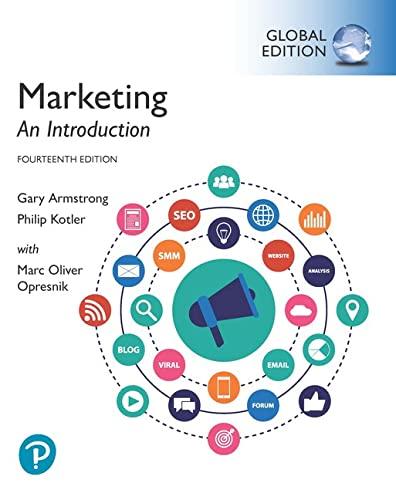Once upon a time, there were two major forces dominating the discount retail market: Walmart and Target.
Question:
Once upon a time, there were two major forces dominating the discount retail market: Walmart and Target. The two retailers offered very similar merchandise assortments, and their stores were close to one another—often facing off from opposite sides of major boulevards. The two were constantly compared—the press rarely covered one without mentioning the other.
Walmart was far and away the market leader. But although Target was a distant runner-up, its stylish “cheap chic” positioning and “Expect More. Pay Less.” mantra made it a formidable challenger to Walmart’s always-lowest-price positioning. In fact, Target grew at a faster rate than Walmart for years, nibbling away at the giant’s market share and posing a genuine threat.
But what a difference a decade makes. Since the Great Recession of 2008, Walmart’s annual revenues have increased by more than $120 billion while Target’s have barely moved. In fact, Target’s $72 billion in total sales last year was lower than six years before. Not only has Walmart improved its game, but increased competition from Amazon, Costco, Kohl’s, and dollar stores have flattened Target’s growth. Still, Target hasn’t given up. It has doubled down on improving its customer experience while at the same time cutting corporate costs. So far, however, its efforts haven’t seemed to make much difference.
All that may soon change. Today, Target is making a major investment that it hopes will help it regain its edge in the retail world and restore its growth. For a cool $550 million in cash, Target recently acquired Shipt, the exploding four-yearold startup with a thriving same-day delivery network across 80 U.S. markets. The future of retail favors companies that can deliver goods fast and cheap, and Target is serious about establishing a competitive advantage in delivery. With the Shipt acquisition, Target plans not only to increase sales of its current inventory but also to become a major player in an area of retail where it has languished—groceries............................
Questions 1. As completely as possible, diagram the value delivery network for Target’s grocery business, from raw materials to finished consumer goods.
2. Is Target a producer, a consumer, or an intermediary? How about Shipt? Explain.
3. Discuss Target’s channel management procedures.
4. Regarding the same-day delivery venture, why are Target’s partnerships important?
5. Will Target’s acquisition of Shipt result in growing revenues in the coming years? Explain.
Step by Step Answer:

Marketing An Introduction
ISBN: 9781292294865
14th Global Edition
Authors: Gary Armstrong, Philip Kotler, Marc Oliver Opresnik





